Children's House
Children from 3 to 5 years
This classroom is called Children’s House because everything within it is designed to allow the children to move freely and safely, and be secure, comfortable and independent. In the Children’s house, children choose their activities independently and move from one to the next at their own pace.
The specifically designed Montessori materials aid the child’s ability to absorb knowledge and continue the process of self-construction.
The group has 24 children age from 3 to 5 years. The teacher ratio is 1 teacher to 8 children.
The program is divided into 7 areas:
- Practical Life / Hand-Eye co-ordination
- Sensorial
- Language
- Mathematics
- Understanding the World (culture & community, nature & science)
- Art / creative/ Imagination
- Music / Singing / dance, plus Outdoor
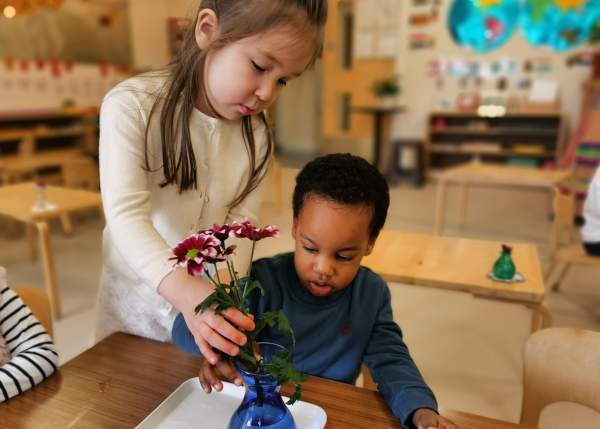
Practical Life / Eye-Hand co-ordination
Practical Life activities support the development of fine motor skills, as well as other learning skills for more advance activities to support writing. The activities include Care of the Person e.g. button frames, zip frames; Care of Environment e.g. dusting, sweeping, preparing snacks, washing dishes; Grace & Courtesy e.g. greeting people, saying please, thank you, and knowing how to ask for help; Eye-Hand co-ordination e.g. pouring, threading small beads, use of scissors, gluing etc.
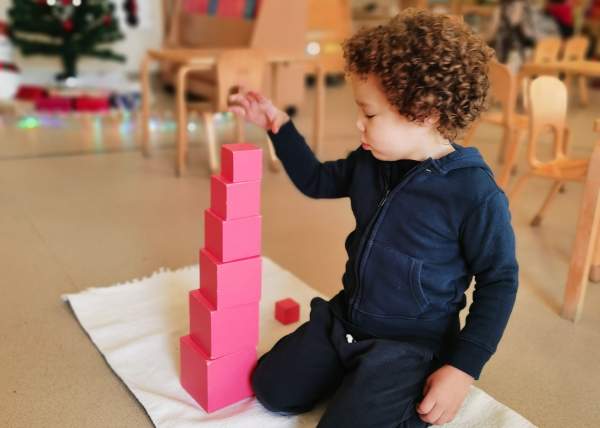
Sensorial
Children under 5 years explore and take in knowledge around their environment through all of their senses. We have special Sensorial materials that help children refine those experiences and stimulate each of the senses: vision, touch, sound, taste and smell.
Each of the materials is generally a set of objects which isolate a fundamental quality perceived through the sense such as colour, form, dimension, texture, temperature, volume, pitch, weight and taste. The child is initially introduced the distinctions between similar and different things. Later the child learns to grade a set of similar objects that differ in a regular and measureable order e.g. from large to small. After then precise language e.g. large/small, long/short, rough/smooth etc. is given.
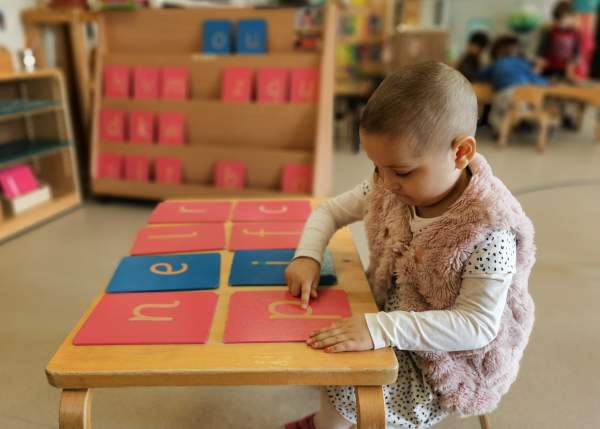
Language
Speaking, listening, reading and writing are all closely interrelated, and our program makes provision for all of them. We use classified language cards, poems, stories and songs as well as a variety of other materials.
Indirect preparation for writing begins with the Practical Life exercise and Sensorial training. We help the children to hear the sounds in words using the ‘I Spy’ game, and then expose them to the alphabet, using ‘Sandpaper Letters’ so they can see how the letter looks, feel the shape it makes and hear its phonetic sound. After some letters have been learned, the children are encouraged to use the wooden letters to form their own words, phrases, sentences and stories. Soon children discover they can read back some words, later phrases, sentences and stories.
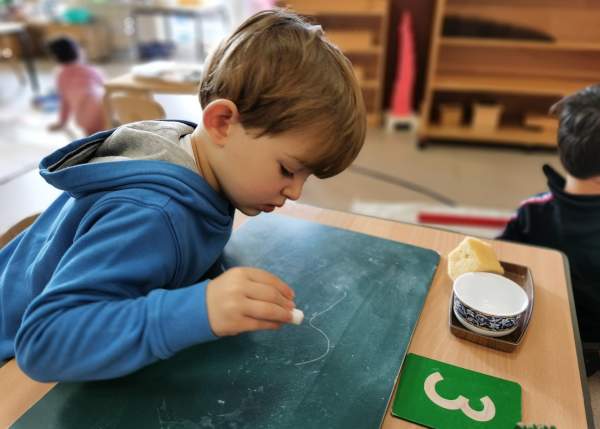
Mathematics
The Montessori mathematics materials are very concrete and sensorial. They help the child to use their own efforts to understand the basic mathematical concepts and then master the concept abstractly.
The child experiences mathematical ideas using the Sensorial materials e.g. dimension, graduation, similarity etc. Then the child is introduced to the functions and operations of numbers, starting from 1 to 10, and then move to the decimal system with numbers into the thousands, as easily as the numbers 1 to 10. Through concrete materials the child learns to add, subtract, multiply and divide and gradually move to toward working abstractly later on.
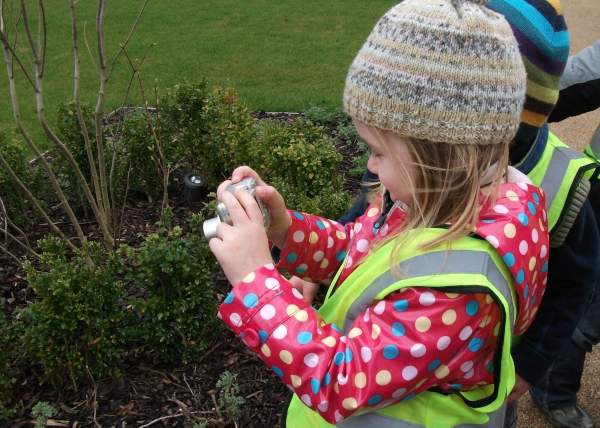
Understanding the world (culture & community, nature & science)
Children have a natural interest in finding out about their world. We encourage children to talk about their families and experiences in their home environment, and celebrate their cultural festivals in the classroom. Children gain an awareness of the world around them by exploring different countries, customs, foods, climates, languages, plants and animals. Children collect natural items of interest to share and display in the classroom.
There are Montessori materials to extend the child’s knowledge of geography, zoology, botany and science.
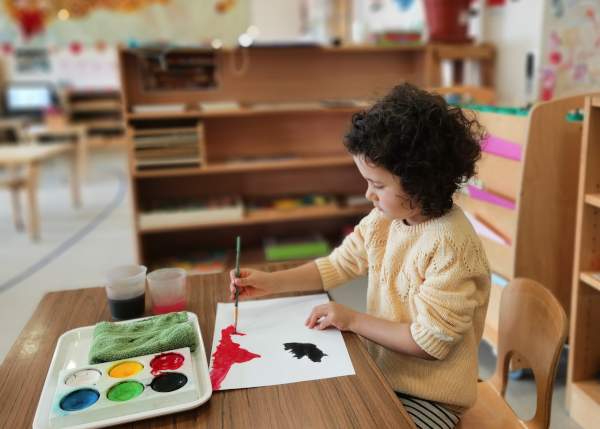
Art / Creative / Imagination
This area has art activities such as painting, drawing, cutting, pasting, collage, model making, construction, role play etc. We also have a selection of creative activities such as Lego, building blocks, transport sets, animal sets, geometric shapes etc. Children use creative activities as a way of recording what they have seen, done, imagined or felt like, making a castle, or a habitat for the animals etc.
We also have a role play corner, where children can dress up to be someone else, whilst exploring roles such as fire fighters, doctors and book/film characters.
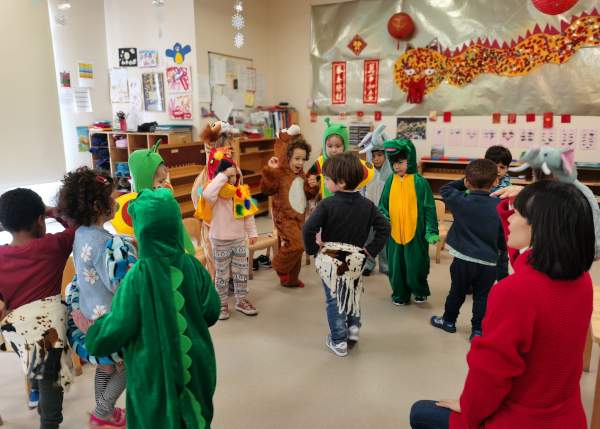
Music / Singing / Dance
Children love music and dance; it is particular pleasurable activities for them.
We have music groups every day in the Children’s House. We play with musical instruments, sing songs and dance along to music etc. The most popular activities are music movement games and actions songs. Children learn their different movements and follow the actions while singing the songs. The music activities can refine movement skills by improving their timing, coordination and rhythm. Also children learn new words and reinforce counting with number songs.
Twice a week, a piano teacher comes to play piano in the music sessions. If the children are interested, they are invited to play the keys on the piano with the Piano teacher. Some children can also have individual piano lessons with the Piano teacher.
We also have a professional ballet teacher who comes in to offer ballet lesson once a week.
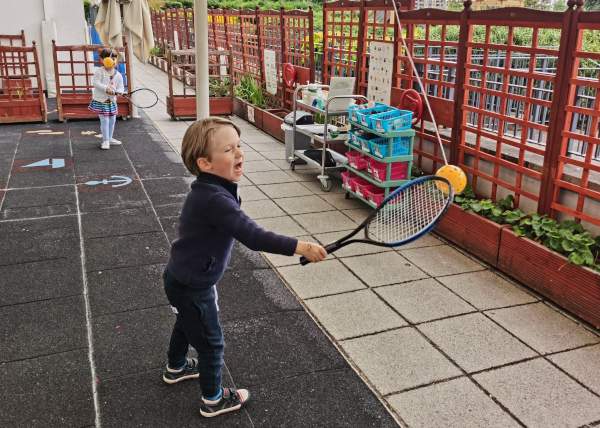
Outdoors
This is the extension of the indoor activities to cover the 7 areas. The activities include a climbing frame and slide, ball games, movement games, tricycles, scooters, football, tennis etc. Children also learn first-hand about the natural world as they plant and care for plants and observe mini-beasts.